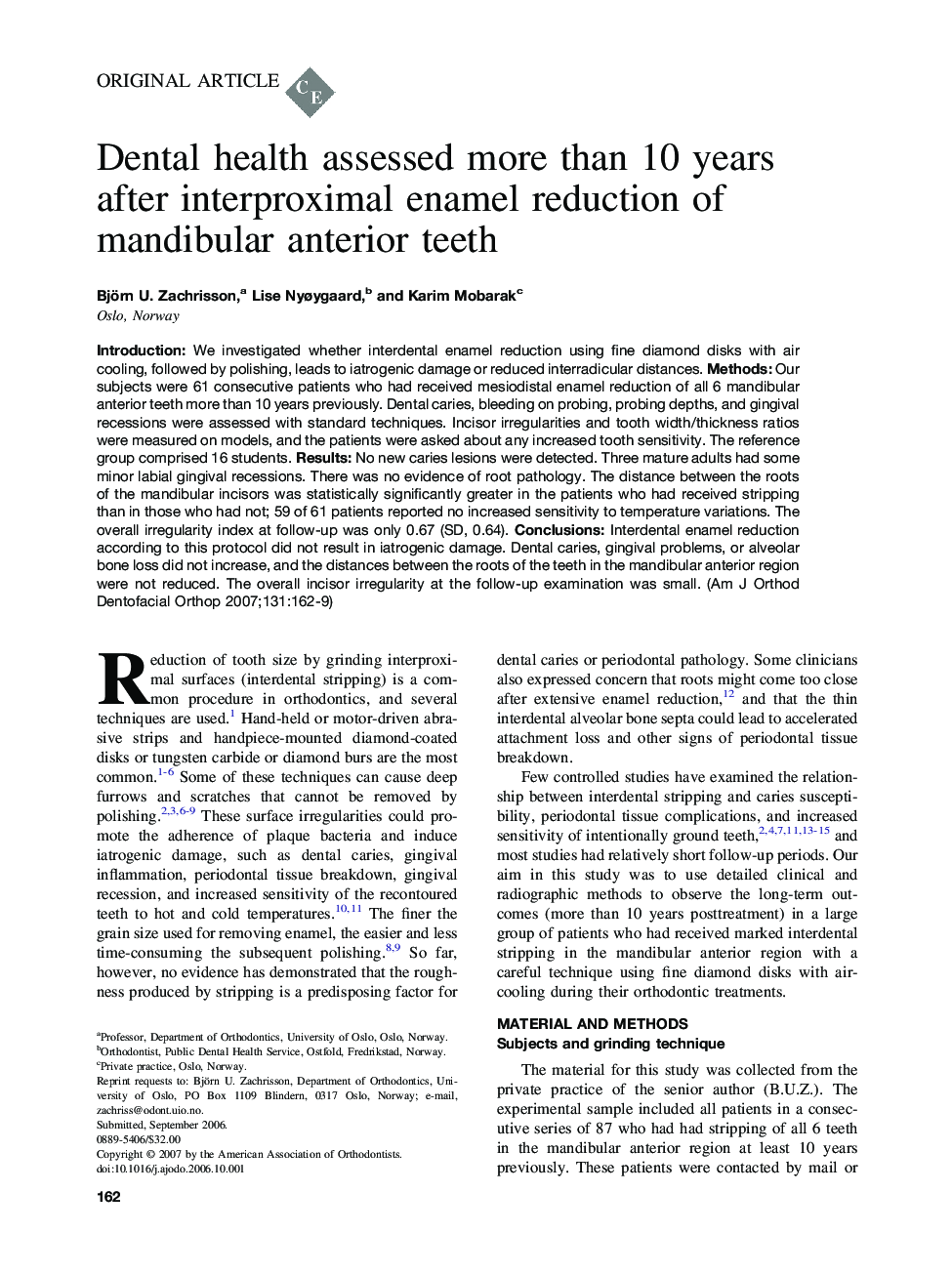| Article ID | Journal | Published Year | Pages | File Type |
|---|---|---|---|---|
| 3119296 | American Journal of Orthodontics and Dentofacial Orthopedics | 2007 | 8 Pages |
Introduction: We investigated whether interdental enamel reduction using fine diamond disks with air cooling, followed by polishing, leads to iatrogenic damage or reduced interradicular distances. Methods: Our subjects were 61 consecutive patients who had received mesiodistal enamel reduction of all 6 mandibular anterior teeth more than 10 years previously. Dental caries, bleeding on probing, probing depths, and gingival recessions were assessed with standard techniques. Incisor irregularities and tooth width/thickness ratios were measured on models, and the patients were asked about any increased tooth sensitivity. The reference group comprised 16 students. Results: No new caries lesions were detected. Three mature adults had some minor labial gingival recessions. There was no evidence of root pathology. The distance between the roots of the mandibular incisors was statistically significantly greater in the patients who had received stripping than in those who had not; 59 of 61 patients reported no increased sensitivity to temperature variations. The overall irregularity index at follow-up was only 0.67 (SD, 0.64). Conclusions: Interdental enamel reduction according to this protocol did not result in iatrogenic damage. Dental caries, gingival problems, or alveolar bone loss did not increase, and the distances between the roots of the teeth in the mandibular anterior region were not reduced. The overall incisor irregularity at the follow-up examination was small.
